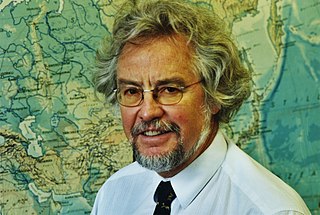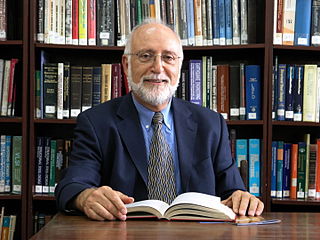
Naval architecture, or naval engineering, is an engineering discipline incorporating elements of mechanical, electrical, electronic, software and safety engineering as applied to the engineering design process, shipbuilding, maintenance, and operation of marine vessels and structures. Naval architecture involves basic and applied research, design, development, design evaluation (classification) and calculations during all stages of the life of a marine vehicle. Preliminary design of the vessel, its detailed design, construction, trials, operation and maintenance, launching and dry-docking are the main activities involved. Ship design calculations are also required for ships being modified. Naval architecture also involves formulation of safety regulations and damage-control rules and the approval and certification of ship designs to meet statutory and non-statutory requirements.
Henry Adrian "Packy" Schade was a United States Navy officer, naval architect, and professor.
The Gibbs Brothers Medal is awarded by the U.S. National Academy of Sciences for "outstanding contributions in the field of naval architecture and marine engineering". It was established by a gift from William Francis Gibbs and Frederic Herbert Gibbs.

Marine engineering is the engineering of boats, ships, submarines, and any other marine vessel. Here it is also taken to include the engineering of other ocean systems and structures – referred to in certain academic and professional circles as “ocean engineering.”

The Society of Naval Architects and Marine Engineers (SNAME) is a global professional society that provides a forum for the advancement of the engineering profession as applied to the marine field. Although it particularly names the naval architecture and marine engineering specialties, the society includes all types of engineers and professionals amongst its members and is dedicated to advancing the art, science and practice of naval architecture and marine engineering.
J. Kim Vandiver is an American university professor at the Massachusetts Institute of Technology (MIT). Vandiver is the dean of undergraduate research and a professor of Mechanical and Ocean Engineering. He is one of the foremost authorities on the dynamics of offshore structures and flow-induced vibration and is a member of the faculty of the MIT-WHOI joint program in Oceanography/Applied Ocean Science and Engineering.
William B. Morgan is an American naval architect and renowned expert in propeller design.
In fluid dynamics and elasticity, hydroelasticity or flexible fluid-structure interaction (FSI), is a branch of science which is concerned with the motion of deformable bodies through liquids. The theory of hydroelasticity has been adapted from aeroelasticity, to describe the effect of structural response of the body on the fluid around it.
John Nicholas "Nick" Newman is an American naval architect noted for his contributions to marine hydrodynamics. Together with David Evans, he initiated the International Workshop on Water Waves and Floating Bodies. He is also known for his contribution in the development of the wave–structure interaction code WAMIT. He is currently emeritus professor of Naval Architecture at Massachusetts Institute of Technology.

Günther F. Clauss is a German professor for Naval Architecture and Ocean Engineering.

Odd Magnus Faltinsen is a Norwegian mathematician and professor of marine technology.
Chiang Chung "CC" Mei is Ford Professor of Engineering, Emeritus, at the Department of Civil and Environmental Engineering of Massachusetts Institute of Technology, known for his contributions in fluid mechanics with applications to civil, environmental, and coastal engineering.

John Vrooman Wehausen was an American applied mathematician considered to be one of the world's leading researchers and pioneers in the field of marine hydrodynamics.
Robert F. Beck is the Richard B. Couch Professor of Naval Architecture and Marine Engineering at the University of Michigan. He is the editor of the Journal of Ship Research.
Theodore Yaotsu Wu is an American engineer. He is a Professor Emeritus of Engineering Science at the California Institute of Technology. His research contribution includes compressible fluid flow, free-streamline theory of cavities, jets and wakes, water waves and free-surface flows, mechanics of fish swimming and bird/insect flight, wind and ocean-current energy, and internal waves in the ocean.
The Centre for Ships and Ocean Structures (CeSOS) is a research centre located at the Marine Technology Centre in Trondheim, Norway. The research centre's goal is to create fundamental knowledge about the design and operation of ships and ocean structures. The centre has been active since 2002, when it was established as a Centre of Excellence (CoE) by the Research Council of Norway and the Norwegian University of Science and Technology (NTNU). Although the financing period by the Research Council of Norway finished in 2012, research activities are still ongoing in 2013 and 2014, financed by external means.
Ian Jordaan is a Canadian civil engineer who has made contributions to the design of offshore structures for harsh, cold environments. He is a professor emeritus and university research professor in the Faculty of Engineering and Applied Science at Memorial University of Newfoundland.

Armen Der Kiureghian, is an Iranian-born Armenian-American academic, one of the founders of the American University of Armenia, where he served as the president from 2014 to 2019.
Louis Landweber, was a leading ship hydrodynamicist, known for Landweber iteration.

R. Cengiz Ertekin is a professor of Marine Hydrodynamics and Ocean Engineering. He currently holds a guest professor position at Harbin Engineering University of China. He is best known for his contributions to the development of nonlinear water wave theories, hydroelasticity of very large floating structures (VLFS), wave energy, and tsunami and storm impact on coastal bridges. He is also the co-developer, along with Professor H. Ronald Riggs of the University of Hawaiʻi, of the computer program HYDRAN for solving linear fluid-structure interaction problems of floating and fixed bodies.








